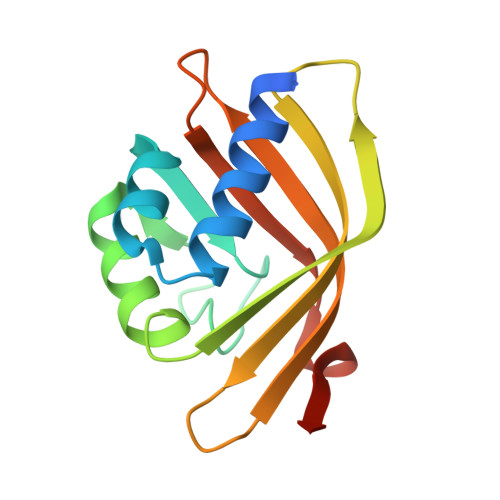Structure-based reconstruction of a Mycobacterium hypothetical protein into an active Delta5-3-ketosteroid isomerase.
Peng, F., Cheng, X.Y., Wang, H., Song, S., Chen, T., Li, X., He, Y., Huang, Y.Q., Liu, S., Yang, F., Su, Z.D.(2019) Biochim Biophys Acta Proteins Proteom 1867: 821-830
- PubMed: 31226491
- DOI: https://doi.org/10.1016/j.bbapap.2019.06.008
- Primary Citation of Related Structures:
5Z3R - PubMed Abstract:
Protein engineering based on structure homology holds the potential to engineer steroid-transforming enzymes on demand. Based on the genome sequencing analysis of industrial Mycobacterium strain HGMS2 to produce 4-androstene-3,17-dione (4-AD), three hypothetical proteins were predicted as putative Δ 5 -3-ketosteroid isomerases (KSIs) to catalyze an intramolecular proton transfer involving the transformation of 5-androstene-3,17-dione (5-AD) into 4-AD, which were defined as mKSI228, mKSI291 and mKSI753. Activity assays indicated that mKSI228 and mKSI291 exhibited weak activity, as low as 0.7% and 1.5%, respectively, of a well-studied and highly active KSI from Pseudomonas putida KSI (pKSI), while mKSI753 had no activity similar to Mycobacterium tuberculosis KSI (mtKSI). Although the 3D structures of the putative mKSIs were homologous to pKSI, their amino acid sequences were significantly different from those of pKSI and tKSI. Thus, by use of these two KSIs as homology models, we were able to convert the low-active mKSI291 into a high-active active KSI by site-directed mutagenesis. On the other hand, an X-ray crystallographic structure of mKSI291 identified a water molecule in its active site. This unique water molecule might function as a bridge to connect Ser-OH, Tyr57-OH and C3O of the intermediate form a hydrogen-bonding network that was responsible for its weak activity, compared with that of mtKSI. Our results not only demonstrated the use of a protein engineering approach to understanding KSI catalytic mechanism, but also provided an example for engineering the catalytic active sites and gaining a functional enzyme based on homologous structures.
Organizational Affiliation:
Key Laboratory of Industrial Fermentation (Ministry of Education), National "111" Center for Cellular Regulation and Molecular Pharmaceutics and Department of Biological and Food Engineering, Hubei University of Technology, Wuhan 430068, China.














